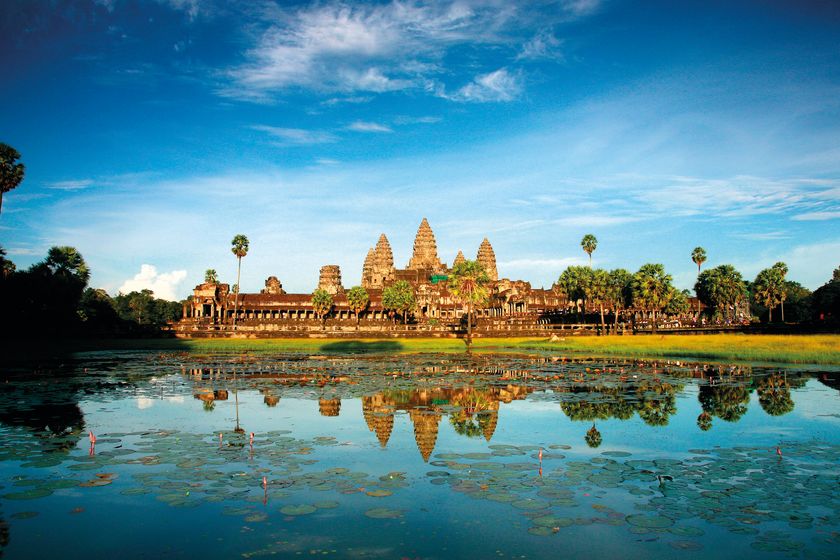Introduction
Even bigger than the Angkor Wat complex is the colossal city of Angkor Thom.
Founded by Jayavarman VII in the 12th century and protected by an eight-metre-high outer wall, the city contains a number of ruins, among them the famous Bayon - an atmospheric temple mountain in the middle of the city, whose 54 crumbling towers feature giant, smiling stone faces. Some of these are thought to be the king depicted as an enlightened Buddhist being, a bodhisattva.
As at Angkor Wat, the walls of Angkor Thom tell stories of gods and legends, with mythical creatures and warriors in battle alongside their king. There are also scenes of daily life at the time, of musicians and jugglers, fishermen, cooks and hunters.
The king would watch parades from the Terrace of Elephants, a purpose-built platform that features carvings of elephants and their mahouts.
Together, the ruins of Angkor Thom typify the ‘lost city' of Angkor and are especially breathtaking in the late afternoon or early morning, when golden light falls on the enigmatic faces.






